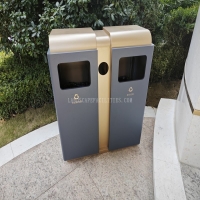Welcome to the website for landscape facilities products and knowledge.
Are there any recommended installation checks to ensure the table’s long-term stability?
Proper table installation is crucial for ensuring long-term stability and safety. Many table issues, from annoying wobbles to structural failures, stem from inadequate initial setup. Begin by verifying that all components are present and undamaged before assembly. Check that the table legs are perfectly perpendicular to the surface using a carpenter's level - even minor deviations can cause significant instability over time. Ensure all fasteners are tightened securely, but avoid over-tightening which can strip threads or crack materials.
Examine the table's contact points with the floor. Uneven floors are a common cause of table wobble; use adjustable glides or shims to compensate for floor irregularities. For wooden tables, consider seasonal wood movement - leave appropriate expansion gaps if specified in manufacturer instructions. Test the table's stability by applying pressure from different angles, simulating normal use conditions. Listen for creaks or cracks that might indicate loose joints or structural weaknesses.
Regular maintenance checks are equally important for preserving table stability. Periodically inspect and retighten connectors, especially during seasonal humidity changes that can cause materials to expand or contract. Avoid placing excessive weight on table edges, and use protective pads under heavy objects to prevent surface distortion. For specialized tables like outdoor or convertible models, follow manufacturer-specific guidelines regarding weight limits and environmental exposure. By implementing these comprehensive installation verification steps and ongoing maintenance practices, you can significantly extend your table's lifespan while maintaining optimal stability and safety throughout years of use.
Related search:

Recommendation
Double-bucket garbage bin, outdoor, metal, multi-color, powder-coated, double-bucket trash can